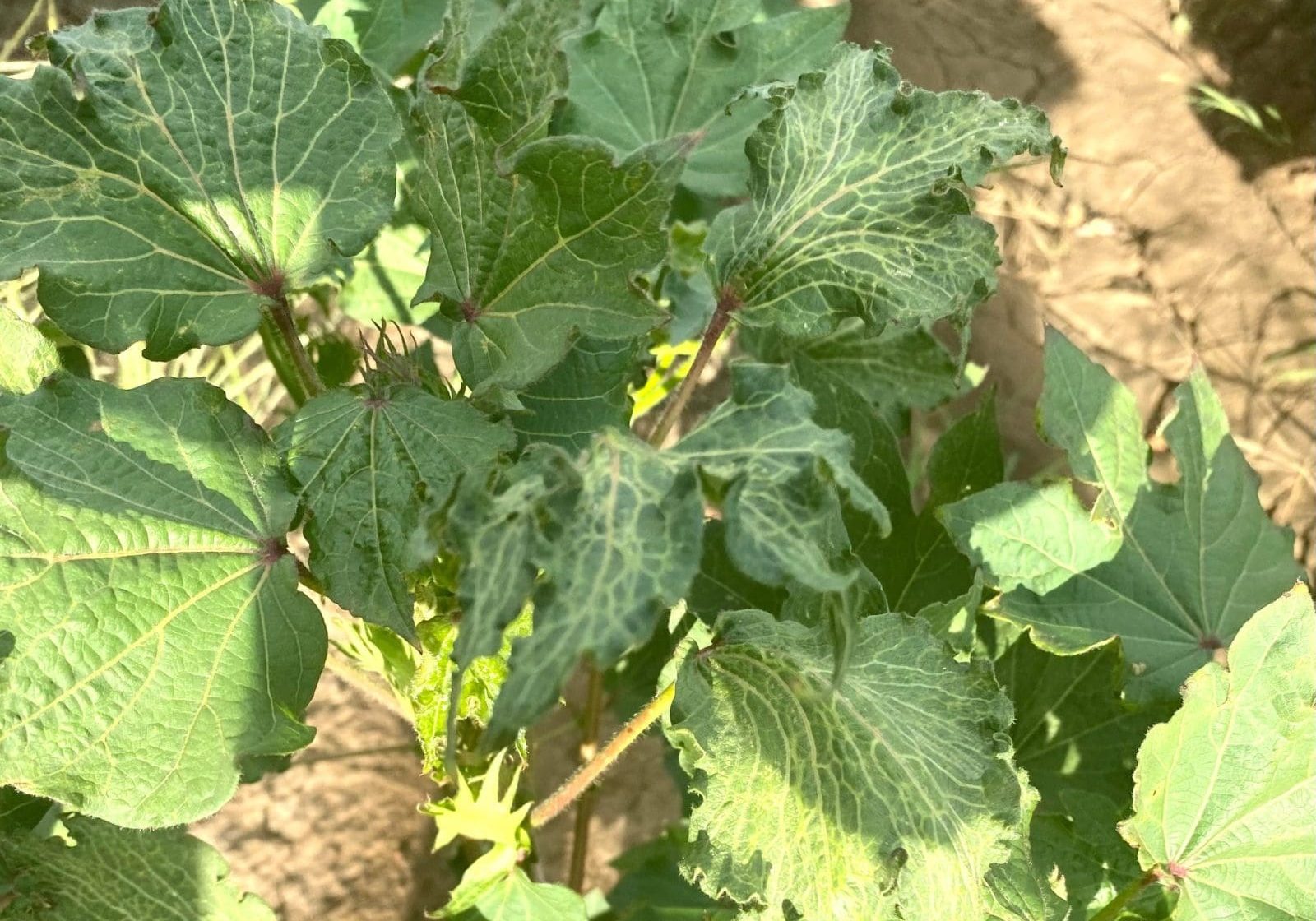
There have been some reports of minor crop damage due to spray drift this season. Photo: GrainOrana
SPRAY drift incidents causing serious damage to cotton crops in New South Wales have decreased compared to last season.
However, growers are still reminded to monitor changing wind conditions when spraying this season to avoid damage to neighbouring properties as well as utilise the Weather And Networked Data (WAND) system.
According to Cotton Australia, the 2022-23 season was one of the worst years on record for spray drift with some farmers suffering millions of dollars’ worth of lost production.
The damage was widespread with incidents reported across most growing regions in southern Queensland and NSW.
Sefton Agronomics agronomist Ella Arnold based in the southern valleys said she had heard reports of “low levels of drift”.
“It’s not enough to suppress the crop from growing,” Ms Arnold said.
“Some of it is self-inflicted and some of it is that there is so much fallow spraying going on and there’s very low lingering levels in the atmosphere.
“I think this year there hasn’t been any specific crops that have been wiped out from a direct event.”
Similarly, there have only been small mild events in the Gwydir Valley, according to Cotton Grower Services agronomist Mal Pritchard.
“It hasn’t been as much discussion this season compared to last season,” Mr Pritchard said.
“Sometimes it can even be when a pre-sowing fallow herbicide reactivates with the moisture.
“It is not always as simple as direct drift.”
Don’t be complacent
Despite the reduction in reported incidents this season, growers are still urged to be mindful when spraying with weeds thriving following summer storms.
NSW Farmers Walgett Branch secretary and spray contractor Enid Coupe said off-target spray drift can easily occur if chemicals are applied at the wrong time of day, or during the wrong weather conditions.
“Monitoring numerous weather stations in your district — not just the closest ones — is essential so you can make informed and appropriate decisions around whether to put on your next load or not,” Dr Coupe said.
NSW Farmers agricultural science committee chair Alan Brown added that paying attention to spray setup was also vital to preventing spray drift.
“Simple measures such as using the appropriate spray nozzle and spraying as close to the target as possible also go a long way when it comes to preventing drift,” Mr Brown said.
“Crops such as cotton, grapevines, vegetables or pulses can be up to 10,000 times more sensitive than the crop you are spraying, so your neighbor will thank you for being cautious.”
As growers look to control weed pressure this summer, Mr Brown said caution was key to preventing damage to crops when spraying.
“Failing to do so can have extensive repercussions, on not just production and profitability but livelihoods, relationships and communities for years to come.”
Technology awareness
Ms Arnold said she had seen an increasing number of growers referencing using the WAND platform before spraying.
“I think growers are talking more about the WAND platform.
“They are using those platforms to make spraying decisions going forward.”
Cotton Research and Development Corporation reports more than 2,400 growers and spray contractors are now using WAND to help inform their spray decisions and 60pc of cotton growers have made a change in their spray application as a result.
Launched in 2022, the system provides free real-time weather information and is a result of six years of result by GRDC, CRDC and commercial partner Goanna Ag.
Goanna Ag CEO Jay Jalota said from this month the platform has launched a new 24-hour forecasting service in addition to the two-hour nowcast previously available to users.
“From January we are introducing a new 24-hour forecasting feature, this will provide users with significant benefits in terms of spray job planning, staffing and logistical support,” Mr Jalota said.
“They can log in to WAND the day before, check if conditions will be suitable, and then make decisions about whether to send out workers or not. It will save them time, and money.”
More EPA funding
NSW Greens MP and spokesperson for agriculture Sue Higginson said more than industry change was needed to reduce harmful spray drift events.
She was calling for more funding for the NSW Environmental Protection Authority, arguing that the organisation doesn’t have the resources and powers to regulate spray drift incidents.
“Residents have reported mass de-foliations of remnant native vegetation to the EPA as well as specific vegetation dieback across the landscape and on their properties, but the EPA have taken days or weeks to respond and have essentially told residents that there is nothing they can do,” Ms Higginson said in a statement.
“After much pressure the EPA has recently implemented a regulatory program including active monitoring of spray drift which a step in the right direction, but communities and the environments of agricultural districts are still being subjected to a suite of incredibly damaging chemicals in what is essentially a self-regulating industry,”
Over the last couple of months, the EPA carried out pesticide compliance and education campaigns for broadacre pesticide users in Moree and Walgett in the Northern Slopes.
In October, the organisation announced that it had 15 investigations underway in Griffith, Narromine, Carrathool, Moree, Forbes, Warren and Yallaroi looking into instances where people may be operating without a license or spraying in weather conditions where pesticides were likely to drift and cause damage.

HAVE YOUR SAY